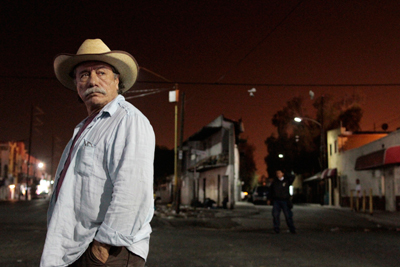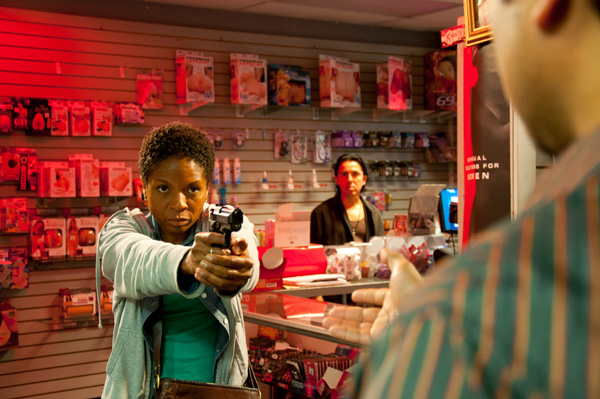by John Sayles

The first storytelling I got to do was as a novelist in the 1970s, and in those days there was a phenomenon known as the ‘vanity press’. Today we would call it ‘self-publishing’ with little hint of derision, but back then it was considered something lesser, tacky in a way, amateurs so deluded about their lack of talent they ponied up and paid somebody to print their work and then gave it away as presents to their friends. There were exceptions made for ideologues– medical, philosophical or political– who were too far out for even the most adventurous publishers, but though their plight was understood these people were considered to be mere pamphleteers rather than ‘professional writers’. A professional writer didn’t pay to be published, and in many cases got an advance against royalties from their publisher. My first advance for a novel was for $2,500 in 1975, when the minimum wage was slightly over a dollar an hour. Two years ago I got a $3,000 advance for my novel A Moment in the Sun. Minimum wage, thankfully, has advanced more steadily than my earning power as a novelist. But it was still a big deal to get a good publisher, McSweeney’s, to accept, edit and publish the book after two years of searching for a home for it. I had started to look into the economics of self-publishing, and probably would have done it eventually, but even these days the perception of the book by readers and reviewers, without changing a word of it, would have been altered. I think it’s the best thing I’ve written so far, but if I’d had to pay to get it out in the world that feeling would have been much more defensive in nature.
Go For Sisters, opening in theaters here and there starting the first week of November, is my eighteenth feature and the third in a row I’ve not only had to finance myself (which I did with a few of my first features) but had to pay for the distribution as well. This, unless you’re Mel Gibson (who deserves a lot of credit for it) is not done in Hollywood. It isn’t professional. I made the movie for well under a million dollars, qualifying for SAGs Modified Low-Budget scale, which is creeping closer to California minimum wage, for the actors, and paid an almost-ready-for-prime-time crew what I could. Many of them jumped ship during the four-week shoot when they found a ‘show’ that paid a bit more. I’ve worked in the Philippines where there aren’t really guilds or unions in the film business and the basic contract is often for a 24-hour day, followed by an unpaid day off, then another 24-hour day. This is not only exploitative but highly inefficient, exhausted people never working quickly or well, and our crew there were thrilled to learn that we’d wrap at 6:30 (dusk is the same time all year at the Equator) and they’d get to go back to the hotel, eat dinner and sleep every night. Unions are there for a reason, and if you really can’t afford to work with them, you will get what you pay for (maybe less). The crew on our earliest movies were just young filmmakers willing to try any job to get experience– many of those grips, gaffers, PAs and script supervisors have gone on to be producers and directors. This is a tradition that will continue with new filmmakers, and the Sundance Film Festival continues to get 2,000 or more features submitted every year, many of them watchable and some of them really good. But sustaining this is tough– I’ve always said that on your second feature you either have to pay people something or get new friends.

Go For Sisters is the same film distributed by Variance on my nickel as it would be distributed by Sony Classics or Magnolia or IFC, and so far the critics and audience are too busy to know or care about the difference. Getting them to know of it’s existence, though, is another matter, and costs money.
There used to be ski bums. Guys who hung out around the best slopes, moving to follow the good snow, and taught a few lessons here and there to pay the rent and the bar bill. Some slept on people’s floors. Some did it till their knees gave out. Maybe what we will have in independent movies from now on will be film bums– people willing (or able if there’s a trust fund in the picture) to live without getting paid much or anything, but who every few years can Tom Sawyer a bunch of willing amateurs into crewing and acting in a feature. A lot of good actors aren’t in SAG yet (mostly under 25) and there are very good crew and production people who either haven’t made the union yet or are in one and need the work badly enough to accept one of the low-budget scale agreements. These film bums will be able to operate in the margin, maybe only showing their work for free on YouTube, or building up a direct-web download audience, until they have kids or get tired of the struggle or maybe get lucky and are discovered by the ‘real’ film business, who will pay them for what they do.
Or until their knees are shot.
John Sayles is an American independent film director, screenwriter, actor and author. Like many of our greats, he got his start with Roger Corman; sine then he has gone on to make some of the most distinct American independent films.





